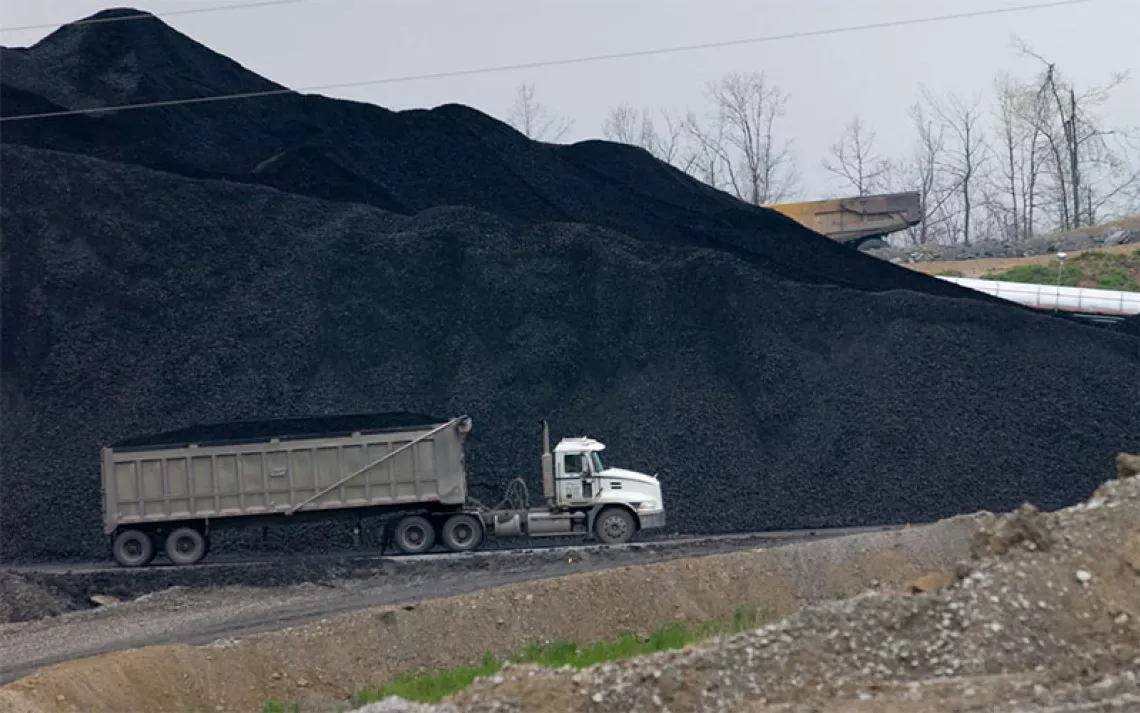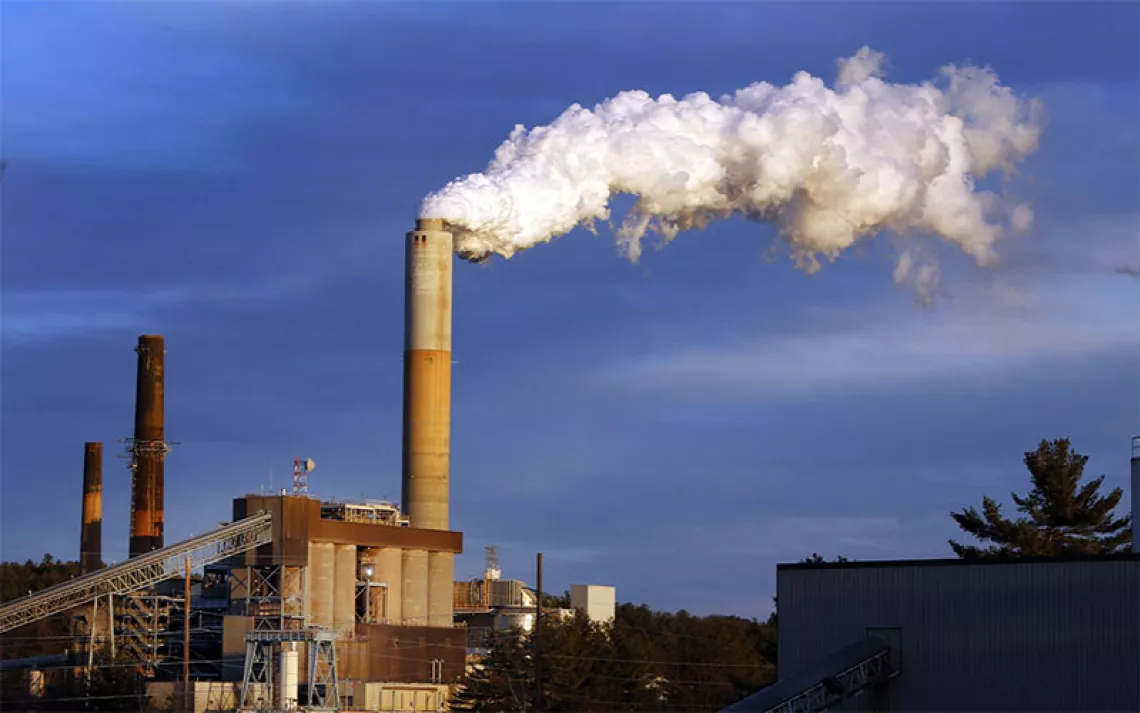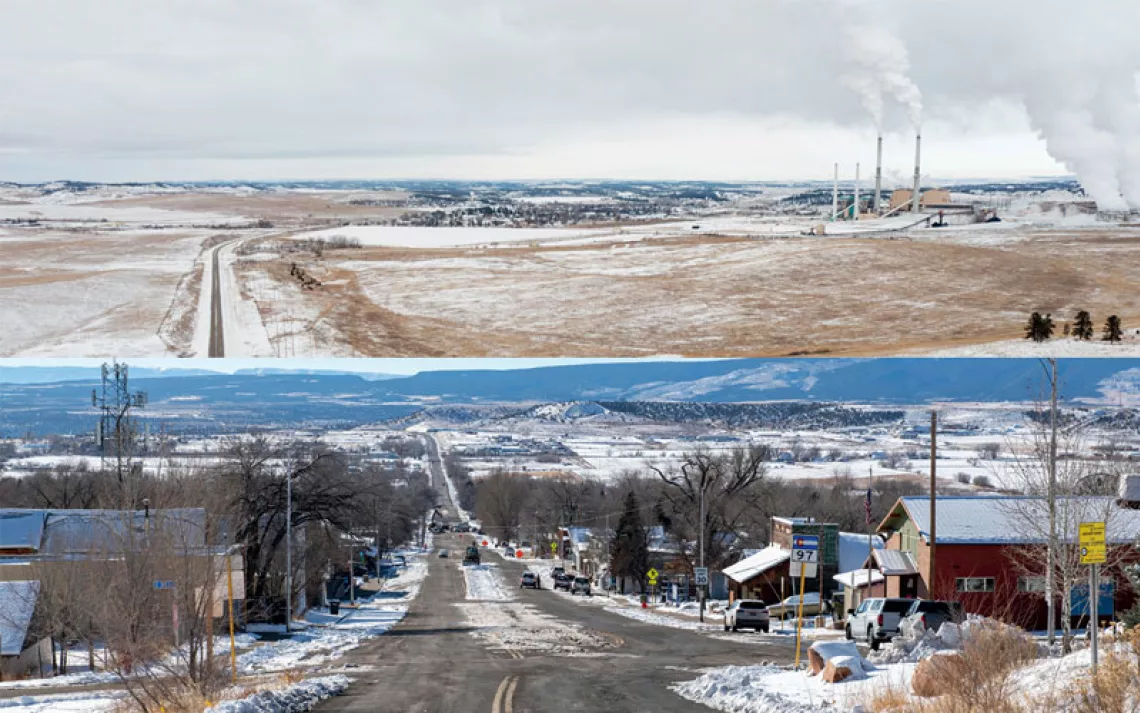Pennsylvania Coal Plants Dump Toxic Pollution Under Expired Permits
Residents and advocacy groups fight to bring polluters into compliance

The Cheswick Generating Station | Photo courtesy of Randy Francisco
For as long as she can remember, Laura Jacko has considered Pennsylvania’s lakes and rivers her home. She grew up in Erie, near the Lake Erie peninsula. About 10 years ago, she moved to Pittsburgh, a city in which three rivers—the Allegheny, the Ohio, and the Monongahela—converge like a wishbone. The topography of the sprawling metropolis known as “Steel City” is defined as much by its bridges—some 446 in all—as its industry. Jacko, 32, spent summers kayaking under some of them and taking walks along the Allegheny’s sloshing banks. For two seasons she was a member of the Steel City Rowing Club.
“The great thing about living near water is that there are so many things to do, and so many ways to connect with nature,” she says. “It was so quiet and peaceful and wonderful to get out on the river, in the middle of a city, with a bunch of other people and have the water right there next to you.”
After Jacko got married, she and her husband bought a house in Verona—a borough of Allegheny County about 12 miles from downtown Pittsburgh. “We absolutely love it here,” she says. “It’s everything that you would want out of a place to raise a family. All the neighbors know each other. The kids play in the street. There are little lemonade stands in the summertime.” The Allegheny River, which is also the family’s primary source of drinking water, is walking distance from the house. “We’re all in that river all the time. We’re all doing things in the river and taking our water from there,” she says. Even when she was pregnant, she and her husband would go to the nearest Kayak Pittsburgh station and rent a kayak to go out on the water together. Five months ago, they welcomed their first baby.
Last year, Jacko also discovered that Verona is just five miles downstream from one of the largest single sources of air and water pollution in Allegheny County: the Cheswick Generating Station, a coal-fired power plant. She was even more concerned when she learned that since 2012, the plant has been emitting toxic heavy metals and chemicals under an expired water pollution permit.
“I was shocked to find out that not as many people knew about the power plant as I would’ve thought,” she says. “It seems like it would be a pretty big deal, but it’s not general public knowledge here. You hear about Flint, which is such a ghastly, horrible thing that the entire nation is looking at it, only to discover that there are so many other situations just like that right here in our own backyards.”
*
The Cheswick Generating Station has been in operation since 1970. Currently owned by NRG Energy, the plant provides electricity for nearly half a million homes by burning coal. When power plants like Cheswick burn coal to produce electricity, they also generate air and water pollution with the potential for devastating impacts on public health and the environment.
There are 20 coal-fired power plants in Pennsylvania, all of which emit heavy metals like mercury, arsenic, lead, and selenium. These heavy metals can accumulate in fish or contaminate drinking water, with the potential to cause adverse affects in people who consume the water or fish, including cancer, cardiovascular disease, kidney and liver damage, and lower IQs in children. By volume, Cheswick’s largest pollutant is sulfuric acid, a key component in acid rain.
Coal ash, another dangerous byproduct of burning coal, is often stored in ash pits known as ponds. In some cases, such as FirstEnergy Corp.’s Bruce Mansfield Power Plant, sited along the Ohio River, those coal-ash ponds and landfills are unlined, increasing the potential for heavy metals such as arsenic to leech into groundwater, which then contaminates streams, rivers, and other water bodies. The Bruce Mansfield coal-slurry pond known as Little Blue Run is the largest in the world. FirstEnergy deactivated it after the Pennsylvania Department of Environmental Protection (DEP) mandated the site’s closure, and the company is now shipping its coal ash to another unlined pit in West Virginia.
Coal-fired power plants in Pennsylvania must secure National Pollutant Discharge Elimination System permits from the Pennsylvania DEP. Those permits set a clear limit for how much pollution these facilities are allowed to release into the environment. Under the Clean Water Act, the permits must be updated and reissued every five years—a review process ensures that the facilities are utilizing the most up-to-date technologies for minimizing the harmful pollution they produce.
In Pennsylvania, that review process has fallen apart.
For years, Cheswick has been operating under an expired water pollution permit (its last one, issued in 2007, expired in 2012). And Cheswick is not the only one. Last June, the Sierra Club, PennFuture, and Lower Susquehanna Riverkeeper Association sued the DEP for allowing 10 coal-fired plants around the commonwealth to discharge toxic pollutants into waters and streams under outdated water pollution permits. Last month, those groups settled the case after the DEP agreed to enforce its own rules and compel those facilities to secure updated permits.
“By allowing these plants to continue to rely on outdated technologies and unreasonable lax mitigation standards, DEP is permitting ongoing degradation of vital Pennsylvania water bodies, aquatic life, and the environment in contravention of the federal Clean Water Act, the Pennsylvania Clean Streams statute, and the Pennsylvania constitution,” says Ted Evgeniadis, the Susquehanna Riverkeeper for the Lower Susquehanna Riverkeeper Association. “Unless the DEP will agree to an enforceable timeline, which they now have, our water bodies will continue to be affected.”
According to the EPA’s 2016 Toxic Release Inventory data, Cheswick is the second-biggest polluter in Allegheny County, as measured by pounds of total air emissions. It also ranks among the highest in terms of the lead it releases. Lead is a dangerous neurotoxin that has profound negative impacts on the human brain and on human development. More than 30,000 people live within three miles of the plant.
“Everything that comes out of this plant flows directly into the Allegheny River, which is one of the primary sources of drinking water not only for the community of Cheswick, but also for many across the greater Pittsburgh region,” says Zachary Barber, the western Pennsylvania field organizer for PennEnvironment, a statewide environmental advocacy organization. “It’s also upriver from one of the primary intakes for the Pittsburgh Water and Sewage Authority. So what comes out of this plant is going directly into our drinking water.”
In 2015, PennEnvironment released a report, “Toxic Ten: The Allegheny County Polluters That Are Fouling Our Air and Threatening Our Health,” examining air quality data for the largest industrial polluters in Allegheny County. The report investigated not just how much these facilities were polluting, but also how toxic that pollution was. The report ranked Cheswick the second-most toxic polluting facility in Allegheny County. (Cheswick procured an updated Title 5 air quality permit after the report was released, and the permit did lead to drastic cuts in some of the major smog-forming pollutants that the facility was emitting.)
“The critical changes that are going to lead to cleaner, safer drinking water for the thousands of people who get their water from the Allegheny River have been delayed, and so it continues to threaten our health,” Barber says. “To say nothing of the air quality impacts as well. The plant is a major contributor to smog pollution, which has a negative quality of life impact.”
During the six years that Cheswick has operated under an expired water pollution permit, not only has the technology changed for minimizing pollution from these facilities, but there have been significant changes in policy. For example, before Cheswick secured its new Title 5 permit, the plant was not required to run all of its existing pollution control systems. Plant operators could leave their NOX controls off, and as a result, release far more pollution than it needed to at a time when Allegheny County was already struggling with high levels of ground-level ozone smog from the very pollution that Cheswick had the ability to control.
Why did it take a lawsuit from environmental and citizen advocacy groups to compel the state’s DEP to enforce its own laws?
“All of the agencies, from the federal to the local level, that deal with enforcing our clean air and clean water protections have faced year after year of budget cuts,” Barber says. “As a result, these cash-strapped agencies don’t have enough environmental cops on the beat or have the regulating staff to keep up with what these facilities are doing. Unfortunately, the reality is that there are too many coal-fired power plants in Pennsylvania operating under expired permits in one form or another because our agencies, whether it’s the EPA or the health department, just don’t have the capacity to get these updated permits out in a timely manner.”
“I hear the same thing as everyone else,” says Evgeniadis. “Not enough resources, not enough boots on the ground. But that’s not an excuse to continue to harm and affect public health and our waters.”
Cheswick is just one of dozens of industrial operations in the greater Pittsburgh area that discharges dangerous pollutants into the air and water. The ATI Flat Rolled Products steel facility in Brackenridge is just 10 miles away from Cheswick. To date, the facility, which has been in operation for 20 years, has never been issued an air quality permit by the local air quality authority. The plant applied for a permit back in the 1990s as it was supposed to. Despite receiving several draft permits with multiple rounds of revision since then, the facility has never been issued a final permit.
Other plants in Allegheny County that are operating under expired permits include the U.S. Steel Clairton Coke Works, the largest coke facility in North America. The plant, located just south of Pittsburgh, has operated under an expired air quality permit since 2012. According to the EPA’s Toxic Release Inventory, Clairton is by far the largest polluter in Allegheny County in pounds of total air emissions. The plant releases roughly five to six times the total tonnage of pollutants that Cheswick emits by weight, including heavy metals, smog pollution, hydrogen sulfide, and lead, as well as some volatile organics. In 2017, the Allegheny County Health Department concluded that the plant had violated air pollution standards some 6,700 times in the previous three and a half years.
*
The settlement that the Pennsylvania DEP reached with the Sierra Club, PennFuture, and the Lower Susquehanna Riverkeeper Association has produced a timeline for new water pollution permits to be drafted for the 10 coal plants that have been operating under expired permits. Once the permits are drafted, they will be posted to the Pennsylvania Bulletin, triggering a 30-day window for submitting public comments regarding the permit. After that, the Lower Susquehanna Riverkeeper Association plans to request a public hearing.
Meanwhile, in another major victory for Pennsylvania’s environmental advocates, Talen Energy announced this week that it had reached a settlement with the Sierra Club to stop burning coal at its Brunner Island power plant. The plant has been one of the largest polluters in the state since it came online in 1961. Like Cheswick, the plant was also operating under an outdated water pollution permit.
“We believe that the removal of the coal-burning component is a step forward in cleaning up the region and making our communities healthier,” Patrick Grenter, senior campaign representative for the Sierra Club’s Beyond Coal campaign in Pennsylvania and Maryland, said. “We will continue to work toward a transition to clean, renewable energy as quickly as possible.”

Laura Jacko with her family | Photo courtesy of Destiny by Design Photography
For Laura Jacko, that process is a long time coming as she tries to catch up to the reality of what this all means for her, her family, and the city and its rivers she has called home for a decade.
“For all these years I’ve been telling people from outside the city how clean Pittsburgh is now,” she says. “If you look at pictures of it from back in the '30s and '40s, it’s got that smog cloud over it. So many people in the United States think of Pittsburgh that way. I was always telling people 'no no no, it’s so much cleaner now.' You would just think that this would be something that’s in the past by now. It’s a shame that it takes citizen groups and everyday residents paying attention to make sure the state follows its own laws and environmental regulations. It shouldn’t be that way.”
What’s happening at Cheswick is, for Jacko, also personal. One part of her family is from Uniontown, famous for its coal-and-steel mine boom. According to family lore, her great-grandfather was a miner who suffered from black lung disease. He died before she was born. When she was pregnant, that history was very much on her mind—she knew full well that her baby was being born in a part of the country with high asthma rates. Even her husband has asthma. Those fears were soon realized: She recently had to get a breathing apparatus with Albuterol for her five-month-old because he got a cold he can’t kick. Doctors told her his lungs are too reactive.
Yet Jacko says she isn’t going anywhere. “This is our home. It’s a magical place. Pittsburgh is wonderful. I believe good things are worth fighting for. If you don’t fight for your community, who will?”
It shouldn’t take citizen groups to bring lawsuits for the government to do its job, Zach Barber says. “We want to have a system where agencies like the DEP have the resources to vigorously enforce the law and help industrial facilities like this comply with the law,” he says. “We need to get them more resources from Harrisburg as well as make sure we populate the ranks of the departments responsible for enforcing environmental protections with people who are going to do what it takes to make sure communities like Cheswick have clean air to breathe 365 days a year, and clean water to drink every time they turn on the tap.”
Until that happens, it will take residents and community leaders, in addition to advocacy and environmental organizations, to make sure that states like Pennsylvania clean up their act.
Jacko intends to be a part of that process.
“I love where I live,” she says. “I wouldn’t live anywhere else. I think Pittsburgh is one of the best places in the United States. I want to see our city get better. I don’t want people to lose their jobs. I want to see them get better jobs. I want a brighter future for our community.”
 The Magazine of The Sierra Club
The Magazine of The Sierra Club



